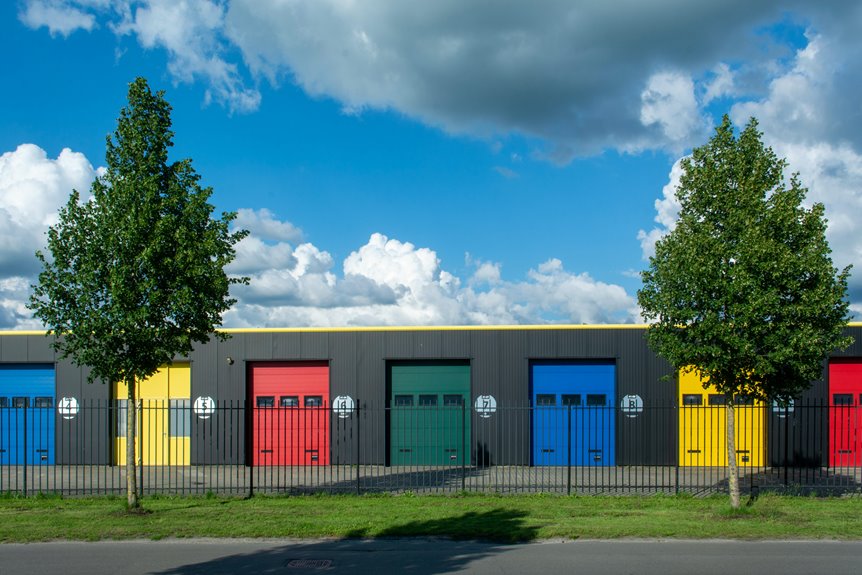Vacant properties have long been a part of the real estate landscape, often perceived as burdens or eyesores. However, in recent years, shifting market dynamics, economic trends, and demographic changes have prompted a reevaluation of vacant properties as potential assets rather than liabilities. This blog explores the future of vacant properties in real estate markets, the factors influencing their status, and the opportunities they present for investors, developers, and communities. This blog will help you in uderstanding more about “ Using vacant properties for investment opportunities“.
Understanding the Current Landscape
The Rise of Vacant Properties
Vacant properties can arise from various factors, including economic downturns, population shifts, and changes in consumer preferences. With many cities experiencing a combination of urban flight and population growth in suburban areas, the number of vacant residential and commercial properties has increased. This trend has raised concerns about blight, crime, and declining property values, prompting local governments and communities to seek solutions.
Changing Attitudes Towards Vacant Spaces
As cities adapt to evolving needs, there’s a growing recognition of the potential inherent in vacant properties. Developers and investors are beginning to see these spaces as opportunities for revitalization, innovative design, and sustainable development. This shift in mindset has sparked interest in the adaptive reuse of vacant buildings and the transformation of vacant land into community assets.
Factors Shaping the Future of Vacant Properties
Urbanization and Demographic Changes
Urbanization continues to shape real estate markets, with more people moving to cities for job opportunities and lifestyle preferences. However, this trend has also led to increased demand for affordable housing and adaptable living spaces. Vacant properties can be repurposed to meet these needs, helping to alleviate housing shortages and promote sustainable urban living.
Economic Recovery and Development Incentives
As economies recover from the impacts of the COVID-19 pandemic, there is renewed interest in development incentives for vacant properties. Governments are implementing programs to encourage investment in neglected areas, offering tax breaks, grants, and other incentives to developers who restore and repurpose these properties. This trend can revitalize communities, attract new businesses, and enhance property values.
Technological Advancements
The rise of technology is changing how vacant properties are marketed, sold, and transformed. Real estate platforms are increasingly utilizing data analytics, virtual reality, and AI to identify potential buyers and investors, showcase properties, and streamline transactions. Additionally, innovative construction technologies and sustainable building practices allow for efficient renovations and adaptive reuse of vacant spaces.
Environmental Sustainability
The growing focus on sustainability is influencing the future of vacant properties. Investors and developers are recognizing the potential for vacant properties to contribute to environmental goals. Redeveloping vacant lots and buildings can reduce urban sprawl, conserve resources, and promote green building practices. This trend aligns with the increasing demand for eco-friendly living spaces and sustainable communities.
Opportunities for Investors and Developers
Adaptive Reuse Projects
One of the most promising opportunities for vacant properties lies in adaptive reuse, where existing structures are repurposed for new uses. This approach not only preserves historical architecture but also reduces waste and construction costs. For example, old factories can be transformed into loft apartments, while vacant retail spaces may be converted into co-working offices or community centers.
Community Revitalization
Investors can play a crucial role in community revitalization by investing in vacant properties. This can lead to improved neighborhood aesthetics, increased property values, and enhanced community engagement. Collaborating with local governments and community organizations can help align investments with community needs, fostering positive relationships and sustainable growth.
Short-Term Rental Market
With the growth of the short-term rental market, vacant properties can serve as lucrative investments. Investors can renovate and furnish these properties to attract vacationers or business travelers. This trend is especially relevant in tourist-heavy areas, where demand for short-term accommodations continues to rise.
Emerging Markets
As real estate markets evolve, investors may find opportunities in emerging markets experiencing growth. Areas undergoing revitalization or gentrification often have vacant properties ripe for development. Investors should keep an eye on demographic trends and economic indicators to identify promising markets for investment.
Conclusion
The future of vacant properties in real estate markets is increasingly bright as communities, investors, and developers recognize their potential for revitalization, innovation, and sustainability. By embracing adaptive reuse, capitalizing on economic incentives, and leveraging technological advancements, stakeholders can transform vacant properties into valuable assets that benefit both individuals and communities. The landscape of vacant properties is evolving, and with it comes the promise of new opportunities and possibilities.
FAQs
Q: What are the main reasons for properties being vacant?
A: Properties may become vacant due to economic downturns, changes in population demographics, declining neighborhoods, or shifts in market demand.
Q: How can vacant properties contribute to community revitalization?
A: By investing in and redeveloping vacant properties, investors can enhance neighborhood aesthetics, attract new businesses, and create vibrant community spaces, ultimately improving property values and quality of life.
Q: What are some common challenges faced when investing in vacant properties?
A: Challenges include potential repair costs, legal issues, zoning restrictions, and the risk of market fluctuations. Thorough research and planning can help mitigate these risks.
Q: How does adaptive reuse benefit the environment?
A: Adaptive reuse reduces waste by repurposing existing structures, conserves resources, and minimizes the environmental impact associated with new construction. It also promotes sustainable living by integrating green practices.
Q: What role does technology play in the future of vacant properties?
A: Technology facilitates marketing, sales, and renovation processes, providing tools for data analysis, virtual tours, and efficient project management, making it easier for investors to identify opportunities and streamline operations.
As vacant properties continue to evolve within real estate markets, their potential for transformation and investment will become increasingly recognized, paving the way for a brighter future in urban development and community enrichment.











